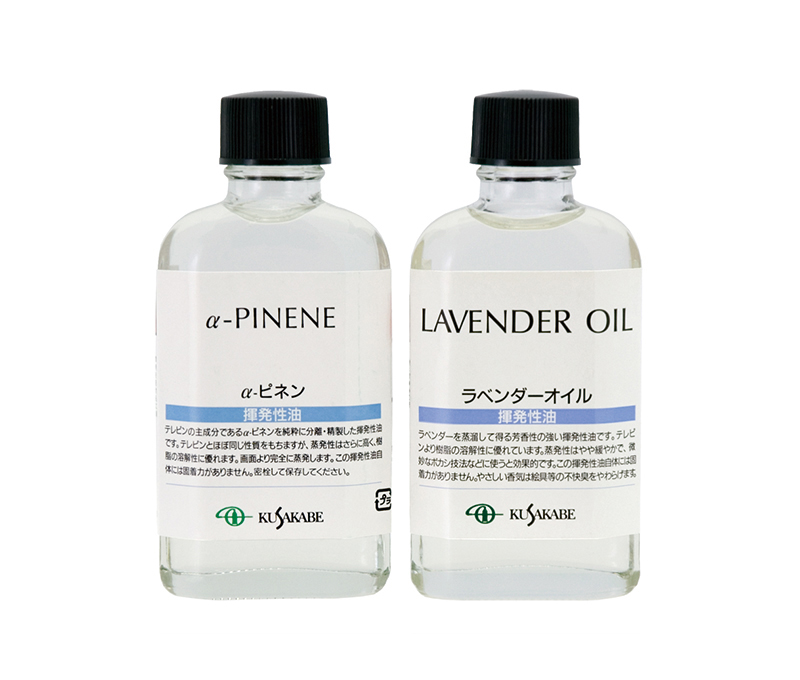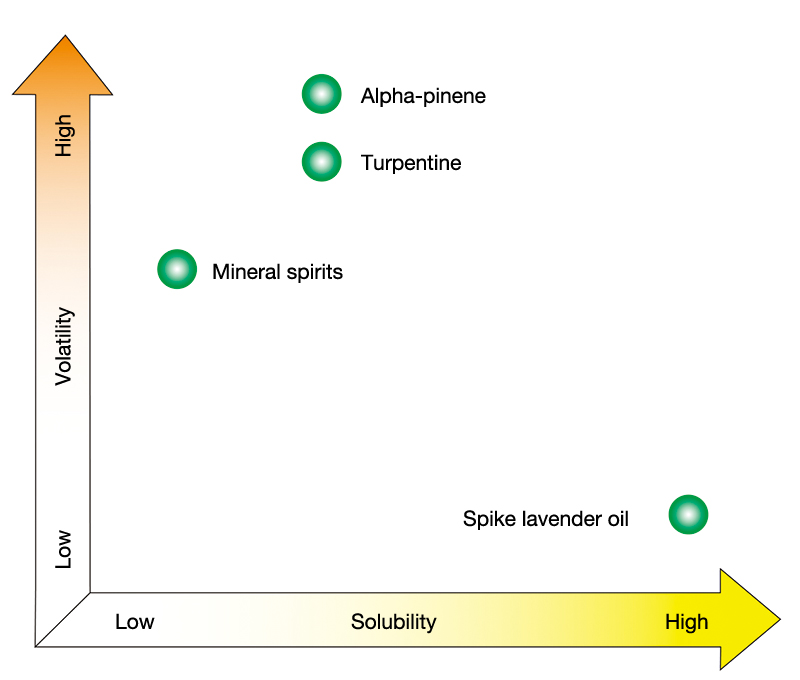Essential Oils
揮発性油
Kihatsuseiyu
CATEGORIES
Essential oils, including turpentine and mineral spirits, are used as solvents when making one’s own varnish, because of their efficacy in adjusting the viscosity and thickness of oil-based paints, accelerating drying, diluting drying oils, and dissolving resins.
Because many of essential oils’ constituent elements evaporate at room temperature, they dry without hardening or forming a film as drying oils do. The oils are characterized by their lack of notable physical attributes.
Essential oils include turpentine (from pine resin) and spike lavender (from lavender), which are made from processed plant-based ingredients, and mineral spirits, which is a mineral-based oil distilled from petroleum.
Turpentine, the most volatile of the essential oils, dries quickly and possesses a moderate amount of solvency. It may, however, oxidize and develop resinic body if it is stored improperly.
Mineral spirits, derived as it is from minerals, is relatively stable and will not develop resinic body. However, its volatility and solvency are slightly less than turpentine’s. As a result, when it is used as a solvent to dissolve resins, it will sometimes not be able to dissolve them completely.
Spike lavender oil (also known as aspic oil) has excellent solvency and is characterized by its particular scent, which is the result of its having been derived from lavender. Because its volatility is low, however, it is easily affected by oxidization and runs the risk of resinification. It is also more expensive than other drying oils.
When using essential oils, because they do not contain any components that will fix the paints to the medium, excessive use will lead to a decrease in the durability and fixativity of the paints, and may diminish the characteristic luster of oil paints. The use of undiluted essential oils should be limited to the early stages of painting (sketching, for example); once painting has begun, they should be used in combination with a drying oil such as linseed oil. The solvent should have larger amounts of essential oils and smaller amounts of drying oils at the beginning of the painting process, with the quantity of drying oil being gradually increased as one approaches completion of the painting.
When using essential oils, one must work in a well-ventilated space away from high temperatures and exposed flame because the oils are toxic and highly flammable.


- Changing the "stretchability" and "luster" of paints using various art solutions


